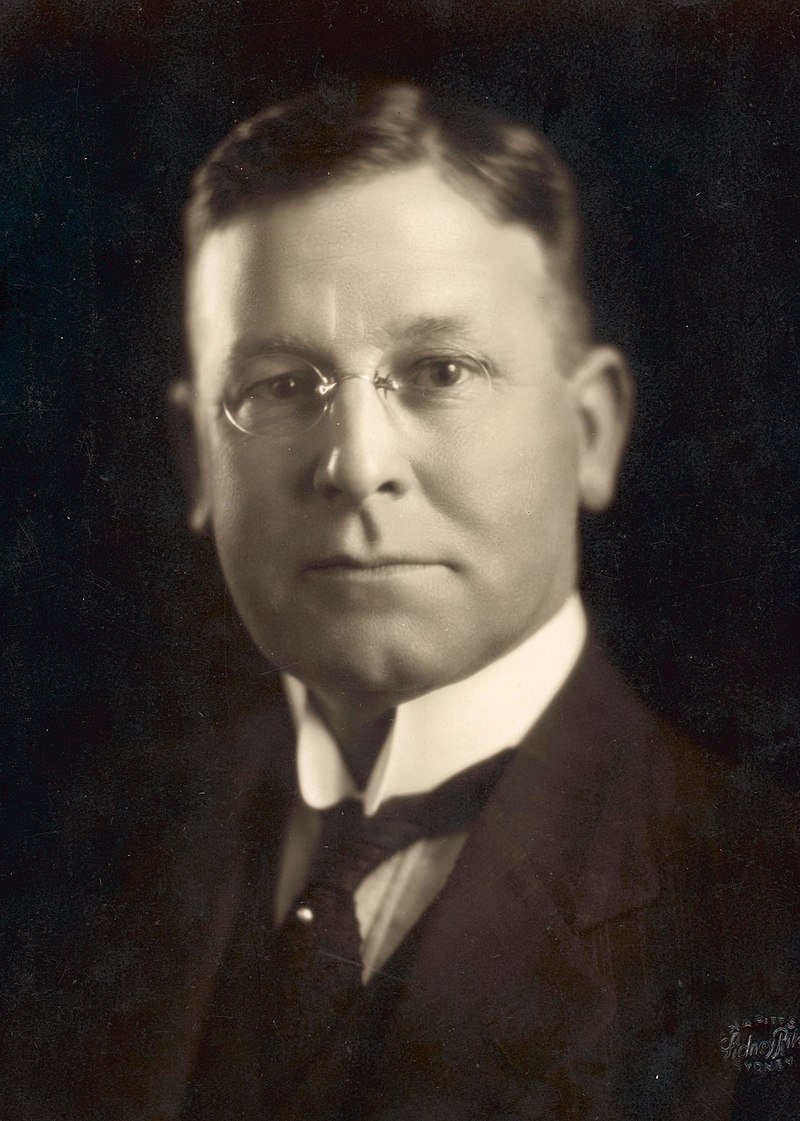On this day, 4 December 1935, Robert Menzies is elected Deputy Leader of the United Australia Party, setting himself up as Joseph Lyons’s designated successor. This was quite a remarkable outcome considering Menzies had only been in Federal Parliament for a little over a year. In the party-room vote he defeated veteran New South Wales politician Archdale Parkhill, in a contest that could have easily set Australian political history down a very different path.
16 years older than Menzies, Parkhill had forged a remarkable career as the organisational head of the non-Labor side of Australian politics. This had started in 1904 when Parkhill was brought in as the secretary of Joseph Carruthers’s NSW Liberal and Reform Association, arguably the model liberal party organisation, featuring a broad platform dictated by a central conference, local branches preselecting endorsed candidates via plebiscite, mass fee-paying membership funding a permanent secretariat, and deliberate women’s representation.
Parkhill took the experience he garnered under Carruthers and brought it into the Federal sphere, serving as the secretary of George Reid’s Australian Liberal League, the ‘national political organiser’ of the fusion Liberal Party, and later secretary of the Australian National Federation (the Nationalist’s organisational wing). In total Parkhill directed nineteen Federal and State election and referendum campaigns between 1904 and 1928, developing highly successful and influential campaigning methods. It is often commented upon how weak the national organisation of the non-Labor side of Australian politics was prior to the formation of Menzies’s Liberal Party, and while this is true, what organisation there was owed itself to Parkhill whose legacy lives on in the modern entity.
Parkhill graduated to Federal Parliament in 1927 as the member for Warringah, quickly earning a reputation as a fierce debater for his successful attacks on the Scullin Government in the House of Representatives. However, having grown accustomed to being the man in charge, Parkhill struggled to get along with his colleagues and was regarded as something of a dandy for his blue cravats and extravagant manners.
Though Lyons gave him several ministries including the important posting of Minister for Defence, Parkhill had been unenthusiastic about the formation of the UAP which he described as a ‘party of spare parts’. In contrast, Menzies had been heavily involved in the machinations which produced the UAP, and it appears that Lyons deliberately conspired to help him in the contest. The deputy leadership was left conspicuously vacant for over a year after John Latham left it, allowing Menzies, who had already taken up Latham’s seat and ministry, time to get settled in the Federal Parliament so that his running for deputy would not come across as premature.
In the first round of the vote for the deputy leadership Parkhill and Menzies saw off the other candidates Richard Casey and Thomas White, while Billy Hughes, who may have harboured lingering leadership ambitions, was excluded because he was not then a minister. In the second count Parkhill, who was known to have free trade sympathies, secured the solid backing of the New South Wales contingent, but this was not sufficient as Menzies was able to garner enough of the smaller State votes to achieve an absolute majority (the specific numbers were never revealed). The loss would spell the end of Parkhill’s career, as in 1937 he would lose his seat to the unendorsed UAP-independent Percy Spender on preferences.
His removal from Parliament was a ‘personal blow’ for Lyons, who though he may have preferred Menzies for the leadership, greatly appreciated Parkhill’s talented service for the Government. His absence would be sorely felt, as even Menzies would grow frustrated with the underperforming and largely directionless final term of the Lyons Government. This would culminate in Menzies resigning from the Cabinet over a decision to shelve a proposed national insurance scheme, but even after this Menzies was still able to live out the promise of the 1935 vote and succeed the Prime Minister.
Further Reading:
A.W. Martin, Robert Menzies, A Life: Volume 1 1894-1943 (Melbourne University Press, 1993).
C.J. Lloyd, ‘Parkhill, Sir Robert Archdale (1878–1947)’, Australian Dictionary of Biography, volume 11, 1988.
Zachary Gorman, Sir Joseph Carruthers: Founder of the New South Wales Liberal Party (Connor Court, 2018).
Sign up to our newsletter
Sign up for our monthly newsletter to hear the latest news and receive information about upcoming events.


